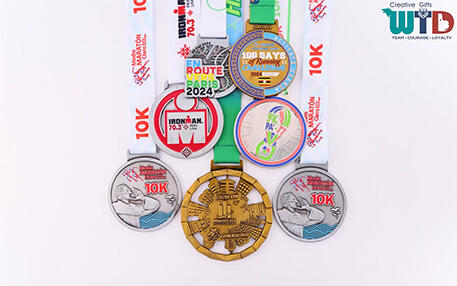-
Designing martial arts competition medals is an essential aspect of any tournament, as they not only serve as awards but also as symbols of achievement and dedication. A well-designed medal can inspire competitors and enhance the overall experience of the event. In this blog, we will explore various tips for creating exceptional martial arts competition medals that reflect the spirit of the sport and meet the needs of participants.
Understanding the Importance of Medal Design
Before diving into the design process, it's crucial to recognize the significance of the medals themselves. Medals represent the culmination of hard work, perseverance, and skill. They are tangible rewards for athletes who dedicate countless hours to training and competition. A thoughtfully designed medal can boost morale, encourage participation, and create lasting memories. Therefore, the design process should be approached with care and creativity.
Choosing the Right Materials
The choice of materials plays a pivotal role in the overall aesthetic and durability of the medals. Common materials include bronze, silver, and gold plating, but there are also options like acrylic, wood, or even recycled materials for a more eco-friendly approach. When selecting materials, consider the target audience and the event's prestige. High-quality materials not only enhance the visual appeal but also ensure that the medals withstand the test of time, serving as a cherished keepsake for years to come.
Incorporating Unique Design Elements
To make your martial arts competition medals stand out, incorporating unique design elements is essential. This could include the event logo, the date of the competition, or even the name of the martial art style being represented. Additionally, consider using shapes and symbols that resonate with the martial arts community, such as belts, fists, or traditional motifs. Custom engraving can also add a personal touch, making each medal unique to the recipient. Creativity in design can set your medals apart and make them memorable.
Balancing Aesthetics and Functionality
While aesthetics are important, functionality should not be overlooked. Medals should be designed to be easily worn or displayed. Consider the weight and size of the medal, ensuring it is comfortable for recipients to wear around their necks. Additionally, think about the ribbon or attachment method; a sturdy and stylish ribbon can enhance the overall look and feel of the medal. The balance between aesthetics and functionality will ensure that your medals are not only beautiful but also practical for the athletes.
Gathering Feedback and Making Adjustments
Once a preliminary design is created, it is beneficial to gather feedback from stakeholders, including competitors, coaches, and event organizers. Their insights can provide valuable perspectives on what works and what doesn’t. Be open to making adjustments based on this feedback to ensure that the final product meets the expectations and preferences of the target audience. This collaborative approach can lead to a more successful design that resonates with the martial arts community.
Industry Trends in Medal Design
As the martial arts community evolves, so do the trends in medal design. Currently, there is a growing interest in eco-friendly materials and sustainable practices within the industry. Many event organizers are opting for medals made from recycled materials or those that promote environmental awareness. Additionally, incorporating technology, such as QR codes that link to event highlights or athlete profiles, is becoming increasingly popular. Staying abreast of these trends can help ensure that your medal designs remain relevant and appealing to modern competitors.
In conclusion, designing martial arts competition medals requires a thoughtful approach that balances aesthetics, functionality, and the values of the martial arts community. By considering the importance of materials, unique design elements, and current industry trends, you can create medals that not only reward athletes but also inspire them to continue their journey in martial arts.

